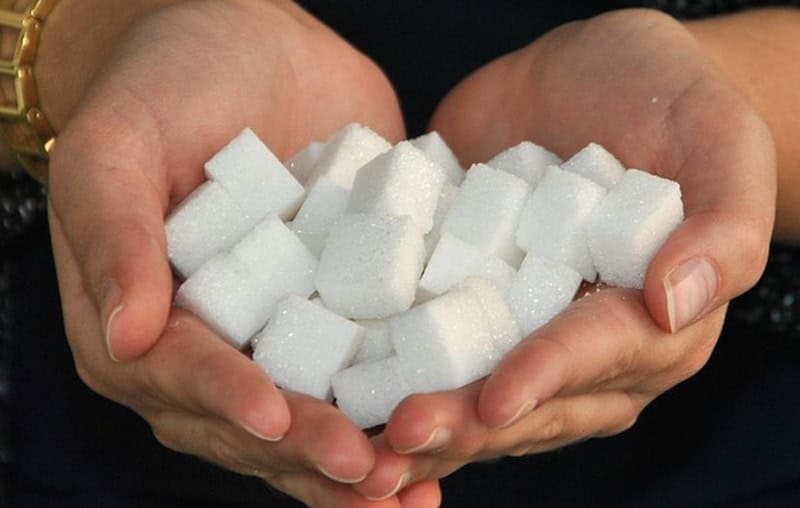The discussion of beet sugar vs cane sugar often includes comparisons of their glycemic index.
The discussion of beet sugar vs cane sugar often includes comparisons of their glycemic index.
Blog Article
Discover the Uses and Perks of Beet Sugar Vs Cane Sugar in Your Daily Diet
Checking out the distinctive high qualities of beet and cane sugar discloses more than just their sweetening capacities; it highlights their unique effects on health and cookeries. Beet sugar, recognized for its subtle taste, is frequently favored in delicate treats, whereas cane sugar, with its hint of molasses, adds splendor to durable dishes. Each type holds its very own dietary account and glycemic ramifications, welcoming a much deeper understanding of their roles in a well balanced diet regimen and sustainable usage methods.
Beginning and Manufacturing Procedures of Beet and Cane Sugar
The distinct climates and dirt kinds required for expanding sugar beets and sugarcane add to differences in their cultivation techniques and geographical circulation, influencing the economics and sustainability of their production. beet sugar vs cane sugar.
Nutritional Comparison Between Beet Sugar and Cane Sugar
Regardless of stemming from various plants, beet sugar and cane sugar are nutritionally very similar, both mainly consisting of sucrose. Each supplies about 4 calories per gram, equating to approximately 16 calories per tsp. Structurally, both sugars are made up of about 99.95% sucrose, with marginal quantities of various other materials like dampness and trace element, which do not significantly modify their dietary profiles.

Eventually, when picking between beet sugar and cane sugar based on nutritional content alone, both offer identical benefits and drawbacks as they are essentially forms of the same molecule-- sucrose, offering quick energy without other nutrients.
Effect On Health And Wellness: Glycemic Index and Caloric Content
Checking out further right into the effects of beet sugar and cane sugar on wellness, it is essential to consider their glycemic index and calorie material. The glycemic index (GI) of both beet and cane sugar is around 65, categorizing them as high-GI foods, which can create quick spikes in blood sugar levels.
Each kind of sugar includes around 4 calories try these out per gram, making their caloric web content equivalent. For those keeping track of calorie intake, specifically when handling weight or metabolic wellness conditions, recognizing this equivalence is important (beet sugar vs cane sugar). Excessive usage of any kind of high-calorie, high-GI food can contribute to health and wellness issues such as obesity, heart disease, and insulin resistance.
Environmental and Economic Considerations of Sugar Manufacturing
Beyond health effects, the manufacturing of beet and cane sugar also increases substantial ecological and financial concerns. Sugar beet cultivation often tends to require cooler climates and has a lower geographical impact contrasted to sugar cane, which thrives in tropical regions. Both crops are extensive in terms of water use and land profession, possibly leading to deforestation and water scarcity. Economically, the global sugar market is very unstable, influenced by changes in worldwide profession plans and aids. Several nations incentivize sugar manufacturing via financial backing, skewing market value and influencing great site small farmers adversely.
In addition, using chemicals and fertilizers in both beet and cane sugar cultivation can result in soil destruction and air pollution, more affecting biodiversity and regional water bodies (beet sugar vs cane sugar). The selection in between cultivating sugar beet or cane often depends upon regional environmental conditions and financial aspects, making the sustainability of sugar production a complex concern
Culinary Applications and Taste Differences
While the environmental and financial elements of sugar production are without a doubt substantial, the option between beet and cane sugar additionally influences culinary applications and taste profiles. Beet sugar, originated from the sugar beet plant, is recognized for its incredibly neutral taste. This makes it a my review here functional active ingredient in cooking, where it does not alter the flavor of various other elements. It dissolves quickly and is suitable for use in cakes, cookies, and breads.
Cane sugar, extracted from sugarcane, commonly preserves molasses traces, which impart a distinctive richness and deepness. The mild variation in moisture content between beet and cane sugar can impact the texture and consistency of dishes, making cane sugar a preferred selection for specific recipes that profit from its unique homes.

Verdict
To conclude, both beet and cane sugar have distinctive beginnings and production procedures, using comparable dietary accounts with mild distinctions in salt web content and taste. While their effect on health and wellness, particularly concerning glycemic index and calories, is comparable, the selection in between them typically boils down to ecological, economic variables, and certain culinary needs. Recognizing these elements can direct customers in making notified decisions that straighten with their health objectives and flavor choices.
Report this page